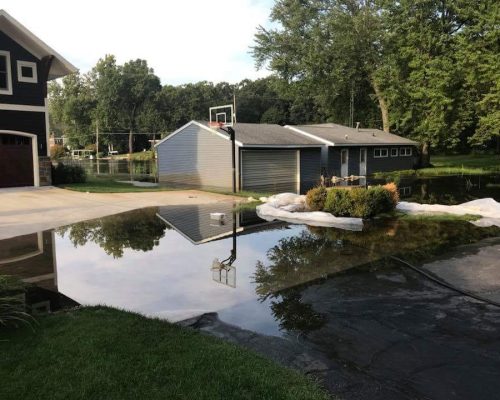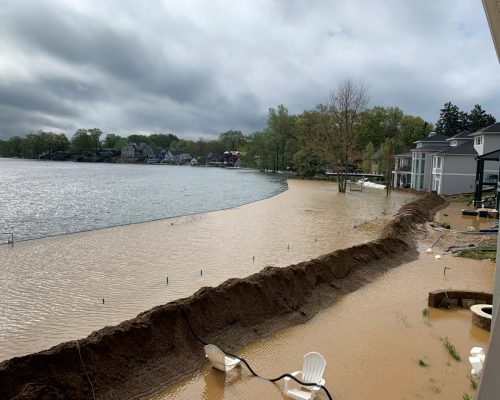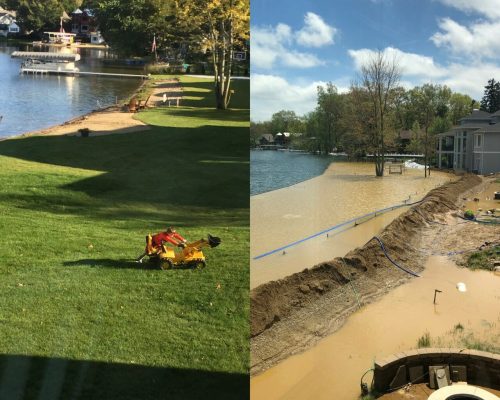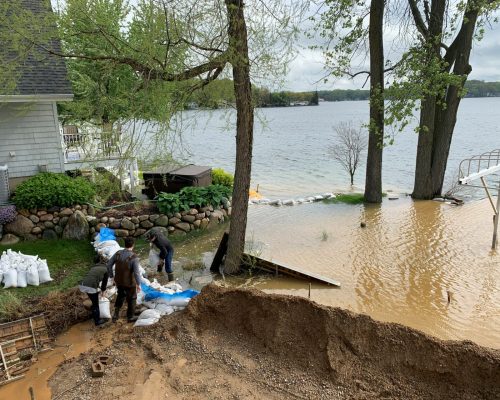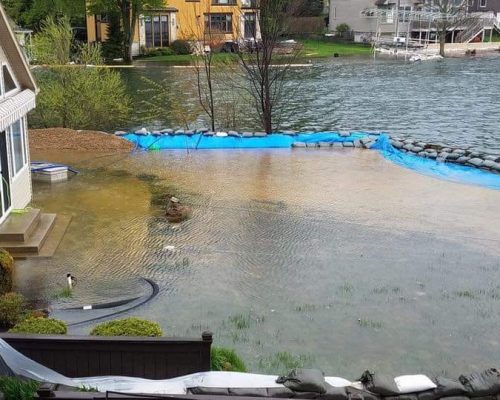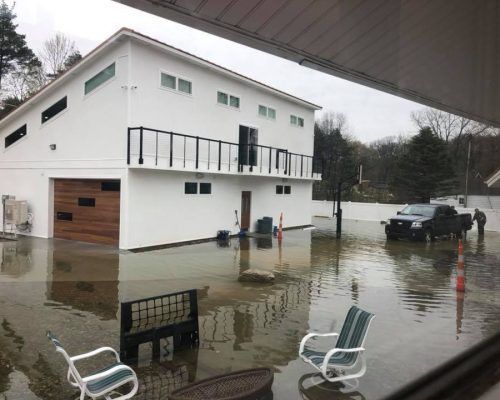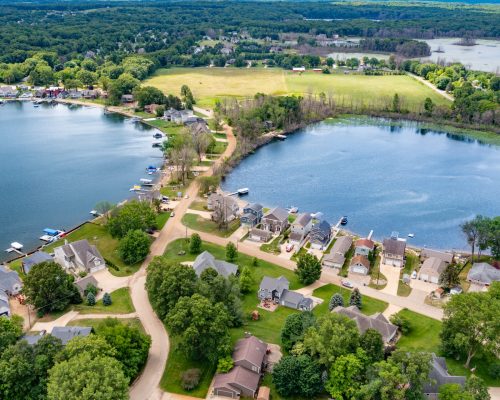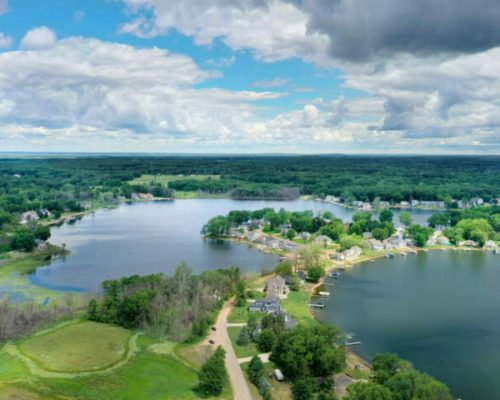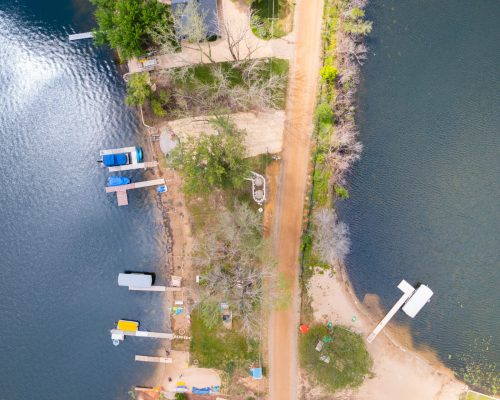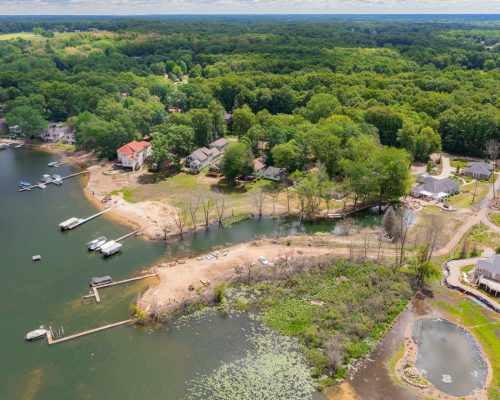In 2017, Texas Charter Township began getting questions from residents living on Eagle Lake and Crooked Lake about lake levels, floodplains, and elevation certificates. Rainfall had been higher than average for a while. By May 2018, widespread flooding around Eagle Lake and Crooked Lake became a critical issue: Basements were flooded and moldy, wakes were out of the question, eight homes had to be demolished, and the lake was unusable.
Prein&Newhof was hired to investigate the cause of the high water levels and develop recommendations for a new outlet to alleviate the flooding. Prein&Newhof deployed its survey team to get a picture of what was going on with the lakes. Many residents were spending thousands of dollars to pump water out of their homes with sump pumps around the clock.
This situation called for a short-term and long-term solution. As a short-term solution, Prein&Newhof investigated pumping water from Crooked Lake into nearby Bass Lake using hydraulic modeling and simulations, to ensure the pumping would not negatively affect other lakes. Unlike the other lakes, Bass Lake has an outlet to the Kalamazoo River. Pumping would require a permit from EGLE, and as part of a permit to pump, they needed information on the water chemistry and invasive species in the two affected lakes. Crooked Lake had invasive species, so the pump to Bass Lake needed a filter. The temporary pumping system moved excess water from Eagle Lake to Crooked Lake and then from Crooked Lake to Bass Lake, which has a natural outlet to the West Fork of the Portage Creek, where it eventually flows into the Kalamazoo River. The Township created a special assessment district to fund the project, which includes 630 impacted properties.
Pumping started in May 2019, but the lake levels continued to go up due to rainfall. The lake level rose and fell a bit until the summer of 2020, when the water levels finally started to drop significantly. The level eventually dropped 3.5 feet in Crooked and Eagle Lakes, and similar drops in levels for nearby Duck Lake, Pine Lake, and Pretty Lake. Pumping stopped on June 1, 2021. Eagle and Crooked Lakes’ augmentation wells were turned back on soon after.
Prein&Newhof’s study found that the real issue was with the water table, and the lake needed a better outlet. The culvert under 8th Street, between Eagle Lake and Bass Lake, was found to be undersized, and Bass Lake’s level was relatively low. The long-term solution involved a gravity line with control structures between the lakes, with discharge routes from lake to lake. The elevation differences between these lake allows for gravity flow of this water, so the future operation and maintenance of the system will be low. Crooked Lake will need to be addressed first, since the other flooded lakes flow into it. The discharge routes will require easements to get through private property and permits through the right-of-way. Design of the discharge routes is near completion, and construction should begin soon. It will include 2,700 feet of gravity main, and cribs (buried intakes) need to be in place for the pumps because of invasive species.
These lake touched many people’s personal lives. Collaboration was necessary with the Township, multi-office Prein&Newhof team, City of Kalamazoo, EGLE, Attorney General’s office, Lake Associations, Fred Upton’s office, Senators, Representatives, Balkema Excavating, the Road Commission of Kalamazoo County, and the Kalamazoo County Drain Commissioner. Prein&Newhof recruited community members to monitor all the levels that needed data, using a cloud-based document that everyone could access. This saved the township a great deal of money. Prein&Newhof also prepared public education materials to help the community understand the issues causing the flooding and why the solutions would work.

